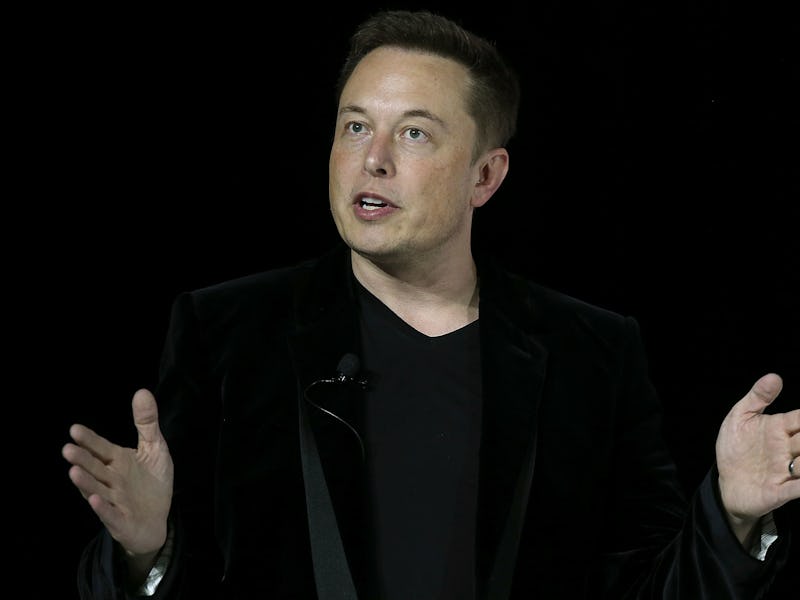Elon Musk Doesn't Want to Put Lasers on Self-Driving Teslas
Google's cars use a LIDAR system, but Musk says he doesn't need it.

Most fully autonomous vehicles use a complicated sensor module, usually placed in a bulbous spinning tower on the roof, to navigate the world around them. But despite their Summon and Autopilot functions, you’ll never see a bulky sensor module on top of a Tesla vehicle. And there’s a good reason for that: Elon Musk hates lasers.
The sensing technology used in Google’s self-driving vehicles and many others is called Light Detection and Ranging technology, or LIDAR. It’s very good at sensing objects around a vehicle in good condition, but doesn’t fare so well in bad weather. Musk has gone on the record repeatedly that he’s not a fan of LIDAR, and on Thursday, he said he was doubling down on his attempts to create an autonomous self-driving system for Tesla vehicles that has nothing to do with the laser technology.
“Working on using existing Tesla radar by itself (decoupled from camera) with temporal smoothing to create a coarse point cloud, like LIDAR,” Musk tweeted on Thursday night. Essentially, he thinks that Tesla’s existing sensor plan that includes GPS information and high-resolution mapping inputs can be improved to the point where LIDAR technology would be redundant on the finished, fully autonomous car.
U.S. Transportation Secretary Anthony Foxx (R) and Google Chairman Eric Schmidt (L) take a ride in a LIDAR equipped (the ugly thing on the roof) Google self-driving car.
Still, LIDAR is an extremely advanced system, often used in aircraft and Musk’s own SpaceX rockets, so why leave it out of Tesla’s plans?
For the most part, it probably comes down to cost. LIDAR, besides being somewhat difficult to integrate into a sporty looking Tesla, is another thing to pay for when Musk is looking to put an affordable, sub $30,000 vehicle on the road by the end of next year.
And there’s reason to believe a system without LIDAR would actually be more reliable anyway, as Musk pointed out in a followup tweet.
He says that because LIDAR uses visible wavelengths to detect objects in space, these laser based systems aren’t as well equipped to deal with rain, snow, fog, and dust.
“I think you can do this all with passive optical and then with maybe one forward RADAR,” Musk said during an October press conference when asked about Google’s LIDAR technology. “If you are driving fast into rain or snow or dust. I think that completely solves it without the use of LIDAR. I’m not a big fan of LIDAR, I don’t think it makes sense in this context.”
Tesla cars are already partially autonomous through the Autopilot program, which also doesn’t use LIDAR. But the upgrade Musk is proposing would be, as he puts it in a fan response, “moderate and maybe big advances with no incremental hardware.”
Of course, Tesla’s development of autonomous technology hasn’t gone off without a hitch. The company is under investigation by the NHTSA following the fatal crash of a Model S owner using the Autopilot feature in Florida. Despite that tragic death, Musk claims half a million lives would be saved by its existing Autopilot features if the technology was more widespread.